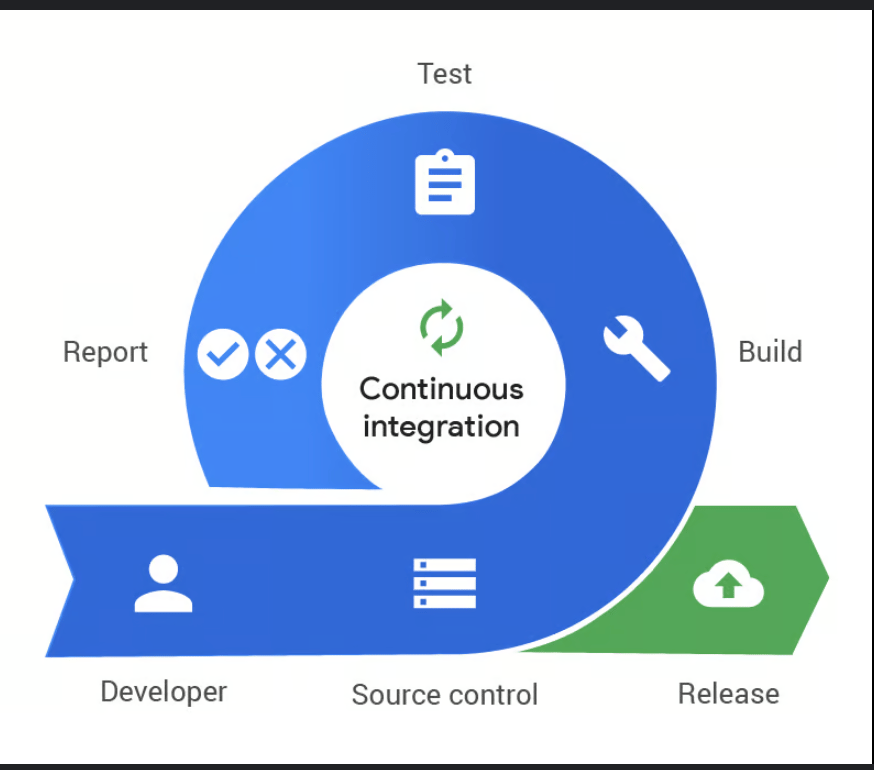- DevOps Weekly
- Posts
- Continuous Integration (CI): The Silent Hero of Customer-Centric Development
Continuous Integration (CI): The Silent Hero of Customer-Centric Development
In this article, we’ll explore how CI isn’t just about code-it’s about building a culture of reliability, collaboration, and customer focus. Let’s dive in.

Hello “👋”
Welcome to another week, another opportunity to become a great DevOps and Software Engineer
Today’s issue is brought to you by DevOpsWeekly→ A great resource for devops and backend engineers. We offer next-level devops and backend engineering resources.
Imagine this: You’re working on a team project, and everyone is coding away, making changes, and pushing updates. But suddenly, things break. The app crashes, features stop working, and no one knows exactly why. Sounds familiar? This is where Continuous Integration (CI) comes in-a lifesaver for modern software teams. But CI isn’t just about tools or automation; it’s about creating a smoother, faster, and more reliable way to deliver value to your customers. Let’s break it down.
What is Continuous Integration (CI)?
At its core, CI is the practice of frequently merging code changes into a shared repository. Every time you push code, it’s automatically tested to catch bugs early. Think of it as a safety net that ensures your code works well with everyone else’s. No more “it works on my machine” excuses!
But CI isn’t just about running tests. It’s about creating a culture of collaboration and shared responsibility. When everyone integrates their code often, you avoid the chaos of last-minute merges and the dreaded “integration hell.”
Why CI Matters for Your Product and Customers
Here’s the thing: CI isn’t just for developers. It directly impacts your product and customers. Here’s how:
Faster Feedback: CI catches bugs early, so you’re not shipping broken features to customers.
Reliable Releases: Automated testing ensures your app works as expected, every time.
Happier Teams: Developers spend less time fixing bugs and more time building features that matter.
When your team adopts CI, you’re not just improving code quality-you’re improving the entire customer experience. And that’s what really matters.
CI Best Practices to Live By
Now that we know why CI is important, let’s talk about how to do it right. Here are some best practices to get the most out of CI:
Commit Small, Commit Often
Don’t wait until you’ve written 1,000 lines of code to push your changes. Smaller, frequent commits make it easier to identify and fix issues. Plus, your team will thank you for not breaking the build.Automate Everything
Manual testing is slow and error-prone. Automate your tests, builds, and deployments. Tools like Jenkins, GitHub Actions, and CircleCI can help you set up a robust CI pipeline.Run Tests in Parallel
Speed up your CI pipeline by running tests in parallel. This reduces wait times and gives you faster feedback. After all, no one likes staring at a spinning wheel.Monitor Your Builds
Keep an eye on your CI pipeline. If builds are failing frequently, it’s a sign that something’s wrong. Fix the root cause, not just the symptoms.Make CI a Team Effort
CI isn’t just the responsibility of one person. Everyone on the team should understand and contribute to the CI process. Share knowledge, document your pipeline, and celebrate when the build passes!
Common CI Pitfalls to Avoid
Even with the best intentions, teams can fall into traps when implementing CI. Here are a few to watch out for:
Flaky Tests: Tests that sometimes pass and sometimes fail can erode trust in your CI pipeline. Investigate and fix them ASAP.
Slow Builds: If your CI pipeline takes hours to run, developers will avoid using it. Optimize your pipeline for speed.
Ignoring Failures: A failing build should be a top priority. Don’t let it sit for days—fix it immediately.
The Bigger Picture: CI and Customer Impact
At the end of the day, CI isn’t just about code-it’s about delivering value to your customers. When your CI pipeline is working well, you can release updates faster, with fewer bugs, and more confidence. And that means happier customers who trust your product.
So, the next time you push code, think about the bigger picture. How does this change impact the customer? How can CI help you deliver a better experience? Because that’s what truly matters.
Your Turn: Let’s Talk CI
What’s your experience with CI? Have you faced any challenges or seen amazing results? Share your thoughts in the comments or hit reply—I’d love to hear your stories! And if you’re just starting with CI, don’t worry. It’s a journey, and every small step counts.
Until next week, keep building, testing, and delivering value. Your customers (and your team) will thank you.
P.S. If you found this helpful, share it with a friend or colleague who’s on their DevOps journey. Let’s grow together!
It will help if you forward or share this email with your friends and leave a comment to let me know what you think. Also, if you've not subscribed yet, kindly subscribe below.
See you on Next Week.
Remember to get Salezoft→ A great comprehensive cloud-based platform designed for business management, offering solutions for retail, online stores, barbershops, salons, professional services, and healthcare. It includes tools for point-of-sale (POS), inventory management, order management, employee management, invoicing, and receipt generation.
Weekly Backend and DevOps Engineering Resources
DevOps and Backend Engineering Basics by Akum Blaise Acha
DevOps Weekly, Explained by Akum Blaise Acha
Simplifying Operating System for Backend DevOps Engineers by Akum Blaise Acha
Why Engineers Should Embrace the Art of Writing by Akum Blaise Acha
From Good to Great: Backend Engineering by Akum Blaise Acha
Web Servers for Backend and DevOps Engineering by Akum Blaise Acha
Reply